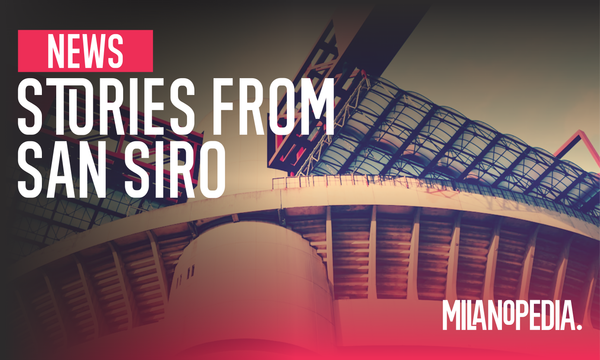SAN SIRO SALE AGREED

In this piece, I present a detailed update on the San Siro / AC Milan new stadium saga — what's been proposed, what’s holding things up, and what the current outlook seems to be.
And after a significant development this week, could there finally be light at the end of this long and seemingly never ending tunnel?
Background: Why change is being considered
- San Siro (Stadio Giuseppe Meazza) is one of the most iconic football stadiums in the world — shared by AC Milan and Inter Milan.
- But it has long been recognised that the stadium is aging and does not meet many modern standards (facilities, revenue-streams, comfort, etc.). Cost of renovation has repeatedly been considered prohibitive.
- Also, heritage laws: parts of San Siro are protected due to cultural significance, which complicates any full demolition.
- With the 2032 European Championships up for discussion, it has been suggested by the footballing powers (FIFA and UEFA) that the city of Milan would not be deemed a suitable host should the San Siro still be in operation when the time of selecting such venues arrives.
What has been proposed
Several alternatives have been floated, discussed, or formalised in part by AC Milan (often jointly with Inter). Key ideas include:
- New stadium in San Donato:
- AC Milan submitted a proposal to build a new 70,000-seat stadium in the suburb of San Donato Milanese, plus associated infrastructure (club museum, hotel, commercial/entertainment spaces).
- That project is supposed to involve improvements in transport/infrastructure as well.
- This was seen as a Plan B in many respects, after difficulties with renovating or replacing San Siro on its current site.
- Replacement / renovation of San Siro:
- At one point, AC Milan + Inter had jointly proposed building a new stadium on or near the current San Siro site.
- One design (“The Cathedral”, by Populous) and another by Manica/Sportium (“Rings of Milan”) have been among the proposals for how a new San Siro could look.
- There has also been discussion about preserving parts of the current stadium (e.g. certain tiers or sections) as heritage landmarks, even if most of the rest is replaced.
Roadblocks & Complications
These are some of the major obstacles delaying progress.
- Heritage / Cultural protection laws: San Siro is considered a site of “cultural interest,” which limits what can be demolished or replaced. In particular, parts of the stadium (like the second tier) may already have architectural protection.
- Legal/appraisal issues around land & valuation:
- Also questions from prosecutors and oversight bodies (e.g. Court of Auditors) about how San Siro and surrounding land are being valued, and whether the sale to the clubs is being done correctly.
- The inequalities in valuations (for the stadium vs surrounding land) have been criticised.
- Municipal / bureaucratic/political resistance: The city government, heritage bodies, local commissions, and community organisations have all played roles in slowing or modifying proposals. Getting approval takes time and often brings revisions.
- Timing and cost: Building a modern stadium (or retrofitting an old one) is expensive (hundreds of millions of euros), and timelines are long. Both clubs want something sustainable and modern, but funding, logistics, design, and building constraints exist.
What’s New / Latest Moves
As of today, there are several new developments:
- AC Milan and Inter have reportedly reached an agreement with the City of Milan to purchase San Siro (or at least the land and surrounding areas) with a view to modernisation.
- The plan, if approved, is for a redeveloped stadium on the existing site, under Manchester based architect Norman Foster, with a capacity of around 71,500.
- The city (mayor Giuseppe Sala) has signalled support and expects the formal approval of the sale before the end of September.
- The stadium is expected to be ready (if all goes to plan) by 2031.
What Remains Unresolved / What to Watch
- Whether parts of San Siro that are protected for cultural/heritage reasons (especially the second tier) can be legally demolished or altered. Some appeals have already been lodged.
- Final approval by the City / heritage authorities. Even with tentative agreements, there are administrative and legal steps to clear.
- The exact design ‒ how much of San Siro will be preserved (if any), or whether a wholly new stadium (on or off the site) will be built.
- Financing / cost overruns are always a concern in projects of this size. How much the clubs will invest vs public funding, how revenue streams will be structured, etc.
- Timeline risk: 2031 is ambitious; delays in legal rulings, appeals, heritage protection, construction could push that back.
Significance & Implications
- For AC Milan, owning or being more closely in control of their stadium is seen as central to growing revenues, competitiveness, and modernising their matchday / non-matchday operations.
- For the city of Milan, this is an urban regeneration opportunity: the stadium area, surrounding land, transport links, hotels, commercial activity, etc. all stand to be impacted.
- Culturally and emotionally, San Siro is deeply significant to fans - myself being one of them; how much of the “old” stadium is preserved will matter. There is likely to be tension between heritage and commercial/practical concerns.
Outlook
Given what we know:
- It seems increasingly likely there will be a major redevelopment of San Siro, rather than simply staying with the status quo. We have however, been here before. And on numerous occasion...
- The Foster-designed version (capacity 71,500) being discussed seems a leading candidate.
- The clubs likely want to have a modern facility by the early 2030s; 2031 is a target given the upcoming European Championships the following year. But that depends on approvals, financing, legal challenges etc.
- It remains possible that pieces of the old stadium must be preserved due to heritage constraints.





